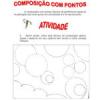
activity of text interpretation, aimed at students in the fifth year of elementary school, about the calanguinho. In size, it does not exceed 30 centimeters. Let's know more about this reptile? So, read the text carefully! Then answer the various interpretative questions proposed!
You can download this text comprehension activity in editable Word template, ready to print to PDF and also the activity with answers.
Download this reading comprehension exercise at:
SCHOOL: DATE:
PROF: CLASS:
NAME:
Read:
In size, it does not exceed 30 centimeters. On the other hand, it is as fast as it can be seen both in the interior of the country and on the coast. But essentially it is a daytime lizard.
When he starts hunting, he is opportunistic and chooses the “most abundant” items. Not only that: it's sit-and-wait (the best time to pounce).
This species is omnivorous, that is, it feeds on meat and vegetables. Their diet consists predominantly of invertebrates. […]
This calanguinho usually hides in small burrows, especially in the hottest hours of the day and also at night.
Males are always larger than females (and, in general, both are smaller when the habitat in question is the coast (compared to inland and island regions).
They also thermoregulate. In other words, when environmental temperatures rise, the body's own temperature drops to prevent overheating. This lizard is also known as trauíra or labigó.
"People's Land". Available in: .
(With cuts and adaptations).
Question 1 – The excerpt “In size, it doesn’t exceed 30 centimeters.” It is:
( ) a narration.
( ) a description.
( ) an argument.
Question 2 – Read back:
“On the other hand, it is as fast as it gets, seen both inland and on the coast.”
In this passage, the text refers to:
Question 3 – In "It's not just that: it's sit-and-wait […]”, the highlighted word:
( ) retrieves information.
( ) corrects information.
( ) announces information.
Question 4 – Underline the expression that indicates an explanation below:
“This species is omnivorous, that is, it feeds on meat and vegetables.”
Question 5 – In the segment “Your diet is composed predominantly by invertebrates.”, the underlined word has the same meaning as:
( ) "mainly".
( ) “occasionally”.
( ) "specifically".
Question 6 – In “This little calanguinho usually hides in small burrows, especially in the hottest hours of the day and also at night.”, the text reveals:
( ) a rare fact in the life of the calanguinho.
( ) a common fact in the life of the calanguinho.
( ) a passing fact in the life of the calanguinho.
Question 7 – According to the text, the calanguinhos are usually smaller in regions:
( ) islanders.
( ) coastlines.
( ) interior.
Question 8 – In the sentence “In other words, when environmental temperatures rise, the body's own temperature drops to avoid overheating.”, the term “para” introduces:
( ) a cause.
( ) a purpose.
( ) a consequence.
Question 9 – Identify the fragment that exposes a sum of facts about the calanguinho:
( ) “But essentially it is a lizard with diurnal habits.”
( ) “[…] is opportunistic and chooses the ‘more abundant’ items.”
( ) “This lizard is also known as trauíra or labigó.”
By Denyse Lage Fonseca
Graduated in Letters and specialist in distance education.


